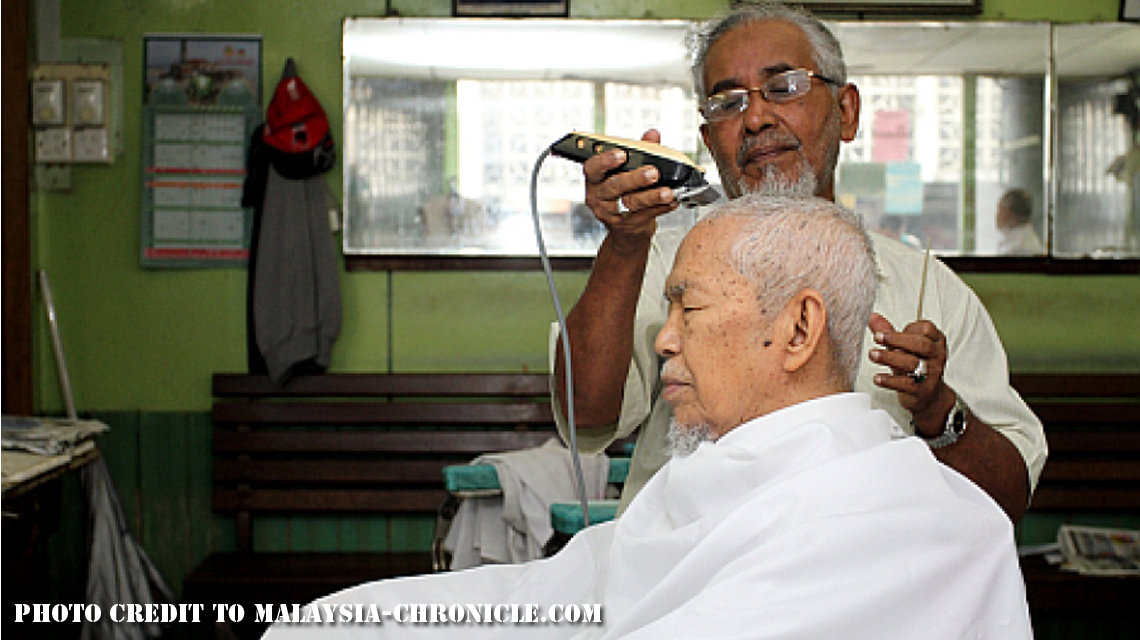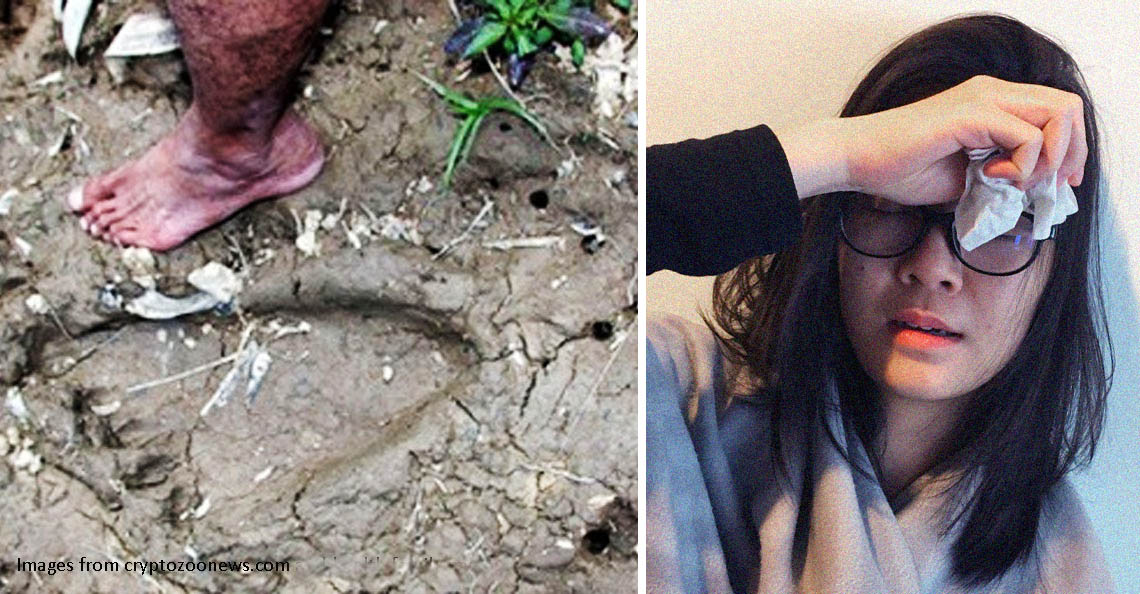6 ways Malaysia can be better prepared for future floods
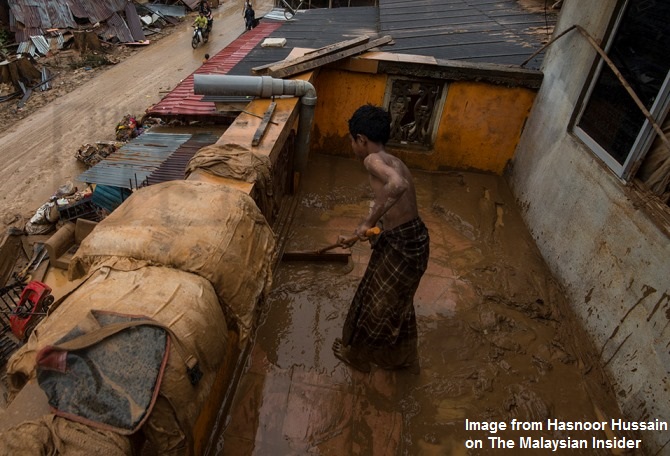
- 833Shares
- Facebook800
- LinkedIn3
- Email8
- WhatsApp17
This article was originally written on 8 Jan 2015 during the Kelantan flood.
[UPDATE – 7 Nov 2017]: The floods have brought a terrible blow to Penang, bringing the victim toll to 6,243 people (1,588 families), on Monday (Nov 6) night, though thankfully it has dropped to 6,080 people (1,572 families) as of this morning. Waters rose to about 10-12 feet, reaching the roofs of landed houses, and areas that have never flooded before (such as Lintang Sungai Ara and Gurney Drive) or had not been flooded for more than 30 years, were flooded! It is reported to be the worst ever experienced by the state.
This disaster galvanised Malaysians from all walks to give aid to Penangites, and the PM visited the northern state to assess the situation.
So we decided to throwback to an article written in 2015, during the Kelantan flood, on 6 things Malaysia can do to be better prepared for floods. These are just suggestions from experts and some are examples taken from other countries who are also disaster-prone. Hopefully with their implementation, we can make Malaysia safer for everyone.
— END of update
Malaysia is no stranger to floods. We had the worst flood disaster ever in Kelantan in 2015. 21 people died, 250,000 lost their homes, damages cost RM1 billion, and water levels at Tangga Krai, Kelantan reached 7.03 metres…yes, higher than the world’s tallest man who stands at 2.51m.
Fingers pointed here and there – the Kelantanese were blamed, the National Security Council (NSC), Najib (who also contracted E.coli while visiting the victims)….
We really feel for our fellow Malaysians. So we just want to highlight some suggestions our country can be better prepared in future. At the end of the day, it’s Mother Nature – no one can really 100% predict what will happen and no one expected this many people to be affected – but if it happens again, here’s what we can do.
1. Warn people sooner
How it was:
Victims were angry at the government’s slow response, it was reported.
A paper, Flood Disaster Management in Malaysia, said that we have an SMS alert that’s being sent out to the police, army, Meteorological Department, and National Security Division. But…
If it happens again:
An early warning is very effective as Japan’s example shows us. They’re always prepared for tsunamis and earthquakes, why? Because they have a Warning Service which sends out an alert, giving citizens a 10-minute head start to get to cover. All over the country they have sensors to monitor seismic activity. Maybe we can install sensors to monitor water levels on the ground too!
The paper suggested that SMS-es should be sent to warn the rakyat themselves too. And maybe the SMS could include what to do and where to go so that evacuees are kept informed at all times?

The Department of Irrigation and Drainage Malaysia (DID) is the one responsible for flood forecasting and warning people. At the same time, we already know that floods usually occur during monsoon seasons. There’s even a list of flood-prone zones in Malaysia on Wikipedia. This shows us that it’s not a lack of information that is the problem.
Anyway, the cabinet listened to the Natural Disaster Management and Relief Committee’s (NDMRC) proposal and agreed to implement an early warning system, so that’s a start.
2. Build more WORKING shelters
How it was:
In her own words, Marina Mahathir stated that the real reason for the disaster is decades of neglect and under-investment of evacuation facilities. Maybe there’s truth to it? Like for example in Tenom, Sabah, apparently only one relief centre was open and housing 19 people, while 6 others were closed.
It’s hard to put an exact figure as to how many relief centres were opened by state NSCs in total, because any building can be used as a makeshift shelter – schools, dewans, even a hospital – and they closed and opened on different days to accommodate the numbers. But reports are numbering them according to districts or state. For example, in Kelantan, about 125 shelters opened, in Terengganu 107, and Pahang 31, on Dec 24.
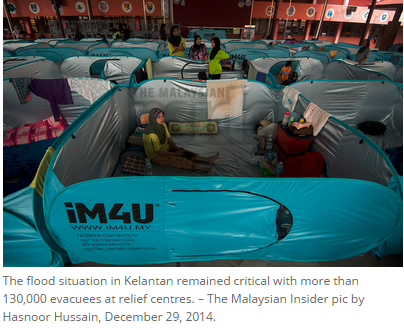
One unnamed aid worker explained just how bad things were when he told The Malaysian Insider that some evacuation centres were flooded (huhhh?!?!). They couldn’t provide food for the victims.
“One thing I can say from ground zero, our authorities are not prepared for a national disaster. Will we ever will?” – Flood aid worker, The Malaysian Insider
Wait, that’s not the most ironic part yet. This is – among the people who died, one man drowned……..at a relief centre!!!
If it happens again:
But why won’t the authorities build evacuation centres in places that the floods can’t get to? As suggested in the flood management paper (in Point 1), don’t construct houses and buildings in flood-prone areas, especially the evacuation centres. Why not build them on higher ground?

But apparently they claim it’s not viable. Datuk Seri Shahidan Kassim, Minister in the Prime Minister’s Department said: “While we wait for the next flood, we will be losing out as the centres will be empty.” He suggested that the centres should serve other purposes at other non-flood times. Ya, that’s a good idea. Let’s do it la.
At other times, these centres can be used as multi-purpose halls for weddings, sports centres, PT3 (ugh) exam halls, etc. Coincidentally that’s what’s proposed in the Philippines too where floods happen quite often. Eh, those halls can rent for functions and earn money, ok! Money which can be pumped back into flood funds.
3. Dig more drains
How it was:
Climate change may cause unexpectedly heavy rains but poor drainage, especially in urban areas, is what causes flooding, according to Centre for Environment, Technology and Development Malaysia (Cetdem) Executive Director, Anthony Tan.
If it happens again:
The one ons thing to come out of this heavy raining is Selangor Dam’s level increase to 70%. Hey, speaking of, how about connecting all drains to water catchment dams around Malaysia? Then at least the water would have a big hole to contain it rather than flowing into houses, kan? It’s all here in this article, Managing Flood Problems in Malaysia – engineering detention ponds, channels, tunnels, widening and deepening rivers, etc.
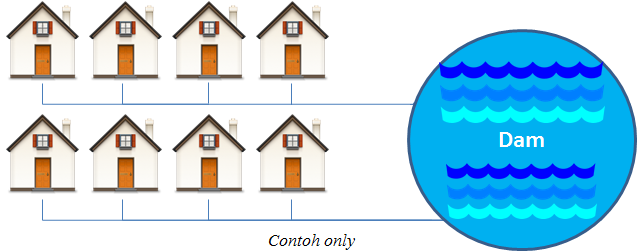
4. Improve coordination and communication
How it was:
Relief and rescue work had a lot of hiccups for these 2 reasons:
- Communication collapse
- Transport problems
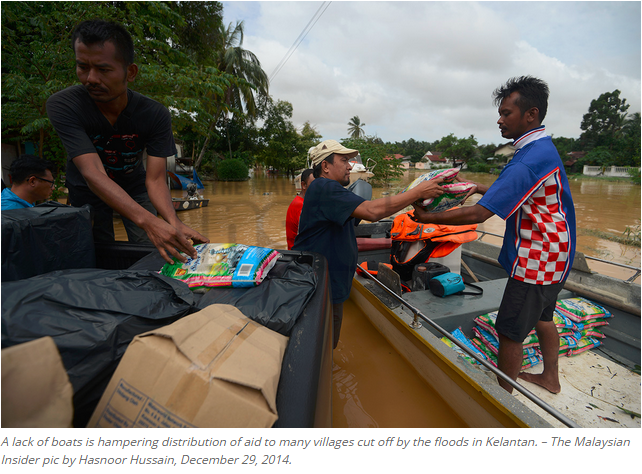
Let’s look at communication first – the NSC chain from federal > state > district broke down because team members at district level became ‘victims’ themselves. Why?
“At this point, electricity supply had to be cut to ensure victims do not get electrocuted.” – Datuk Mohamed Thajudeen, NSC Secretary, The Malaysian Insider
Whoa scary!
As for transport problems, it was difficult for volunteers to access flooded areas. “We could not use heavy vehicles, the currents were too strong to use boats and the winds were too turbulent to go by air,” Thajudeen added.
If it happens again:
So to work out a solution on communication, we can look to how the city of Saskatoon, Canada handled a major power outage. They had an emergency call centre! We can build communication centres here too, in places where floods can’t reach, like on the hills or something.
At the very least, we can equip relief shelters with traditional communication tools. Not smoke signal… we mean this:

As for transport, Najib announced: “Besides that, procuring additional assets like boats and high-performance trucks which can go into flooded areas will also be considered while this will involve a high cost.” With this, we can look forward to help arriving sooner for the next flood season…if the drainage is not already improved by then.
But here is a story of how volunteers ‘cheated’ their way to get to victims. The #RAOKFloodRelief effort used 4×4 trucks to detour through smaller roads on higher ground and bypassed flooded highways. Its coordinator, Michael Yip explained that they used the Lanchang route to reach Temerloh, Pahang. “What we try to do, we try to make detours into the location rather than driving straight into the water,” he told Malay Mail Online.
If it worked once, it could work again next time. Maybe other organisations can use this way in too?
5. Invest in medical aid
How it was:
Earlier, The Star reported a depressing story about how a vegetable farmer witnessed his neighbour having a heart attack while trying to escape the flood.
In Badang, two mothers’ went into labour but waited 2 hours for help that was delayed apparently because VIPs were making official visits!

Then, the Universiti Sains Malaysia Hospital (HUSM) in Kubang Kerian ran out of blood supply while doing its best to cope with 900 patients in its 767-bed facility.
That’s not even counting the potential water-borne diseases in the aftermath yet.
If it happens again:
As we talked about in our earlier article, teams of medical experts have to be on call 24-7. The Malaysian Medical Association (MMA) for instance assembled its MMA Volunteer Corp of doctors and medical students to help the victims.
Maybe someone could set up a computer system with all the medical organisations in Malaysia and when an emergency happens, it could automatically alert everyone of their services needed. The system can delegate locations to the them so that no area is short of help. And hopefully there’ll be better coordination next time like prioritising getting women in labour out than VIPs visiting in.
For the rest of us, we can donate towards clean water and hygiene kits that contain toothbrushes and soap to help protect victims against leptospirosis, diarrhoea, skin disease, and so on. Don’t send polystyrene stuff because even after washing, they can still bring disease. Send proper utensils instead. Blood too is very necessary so if you could donate yours, you will be helping to save lives. If yours is the rare type like A- or AB-, all the more they need it.
6. Stop with the politics
How it was:
While lives are at stake, the Perak state government rejected Selangor’s help of RM100,000. Pahang and Terengganu on the other hand did not follow this example and accepted Selangor’s aid. So since this point is about stopping the politics, let’s forget about what politicians said for now. Let’s see what the rakyat thought.


If it happens again:
During emergencies, can anyone really be picky over parties? Folks are in need here.
Perak insisted that they only way they will accept the donation is if was channelled through an NGO. So if you can’t reason with these people, might as well just send it through an NGO. After all at the end of the day, it’s about saving people right? And if Selangor’s heart is in the right place, they’ll just focus on getting the aid to people. Again the point here is our fellow Malaysians need our help!
We dunno about you guys but if really tak jadi, we could always take it back and improve the drainage systems elsewhere so that next time it can alleviate the flood a bit. Happy endings right?
All this needs money
So looking at all these ways on how we can be more prepared for flood emergencies next time, the standout factor is money. We need money to be able to put these suggestions into practice – a warning system, the drainage, the centres, food reserves, repairs…
The government has spent a total of RM800 million so far on the flood disaster, according to Deputy Finance Minister Ahmad Maslan. It went to food supplies, logistics, and clean-up efforts. But an audit on the fund is being called for to show exactly how the money has been and will be spent because the recovery seems to be still slow.
(P/S: On a separate note RM800 million is only 19% of 1MDB’s debt of RM41.9 billion.)
There’s an article that explains why the Federal Government plays a very important role in handling disaster relief, mainly because they’re supposed to have the funds. Here we can look to the Government as the sort-of headmaster and all the other state governments, private sectors and NGOs are the teachers.

Which brings us to cooperation as well! A headmaster needs the support of his teachers to handle a crisis, right?
So, hopefully we can learn from this experience that we all need to put politics aside to work together and bring relief to flood victims next time…. as Malaysians have shown this time round for the Penang flood.
- 833Shares
- Facebook800
- LinkedIn3
- Email8
- WhatsApp17



